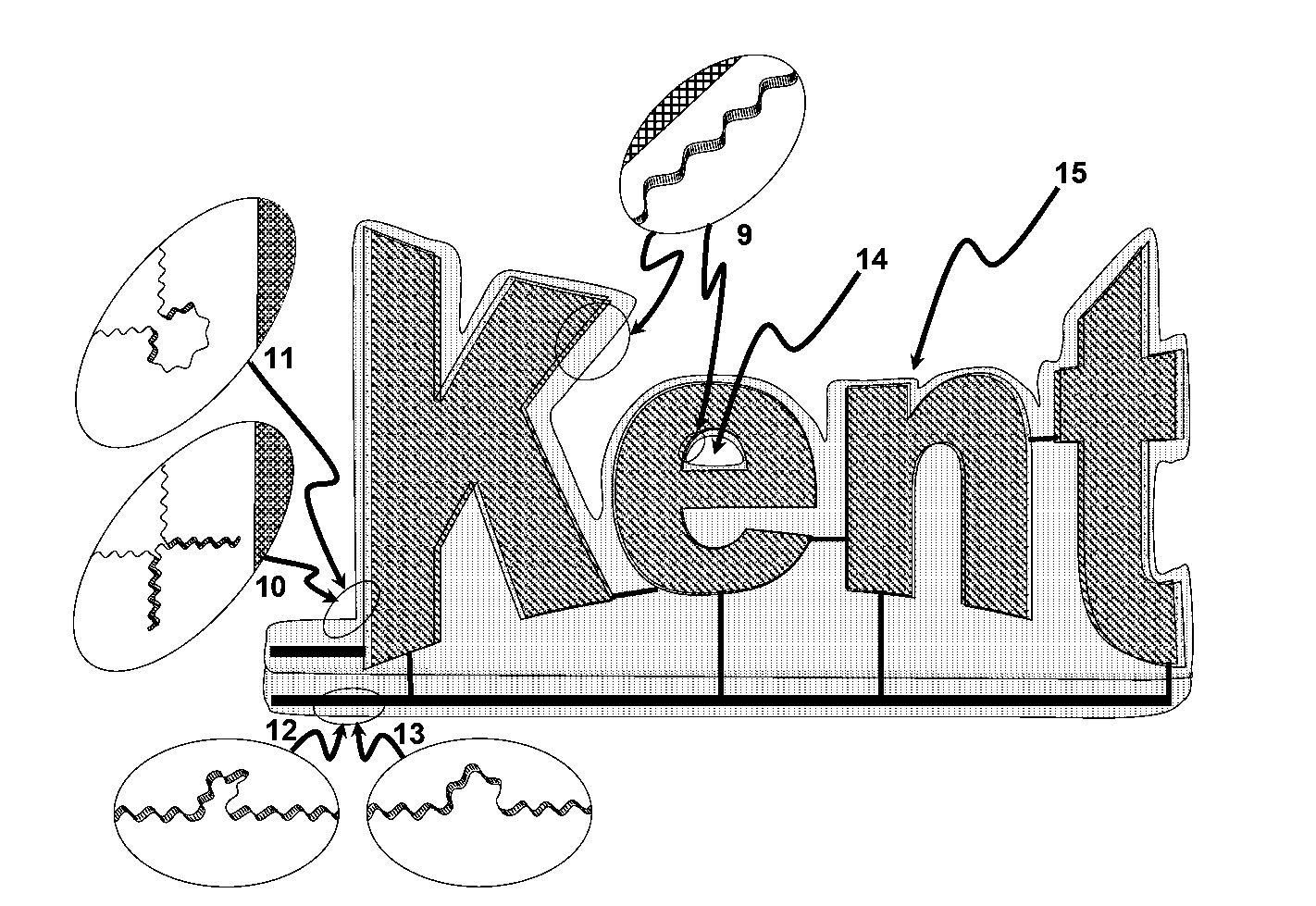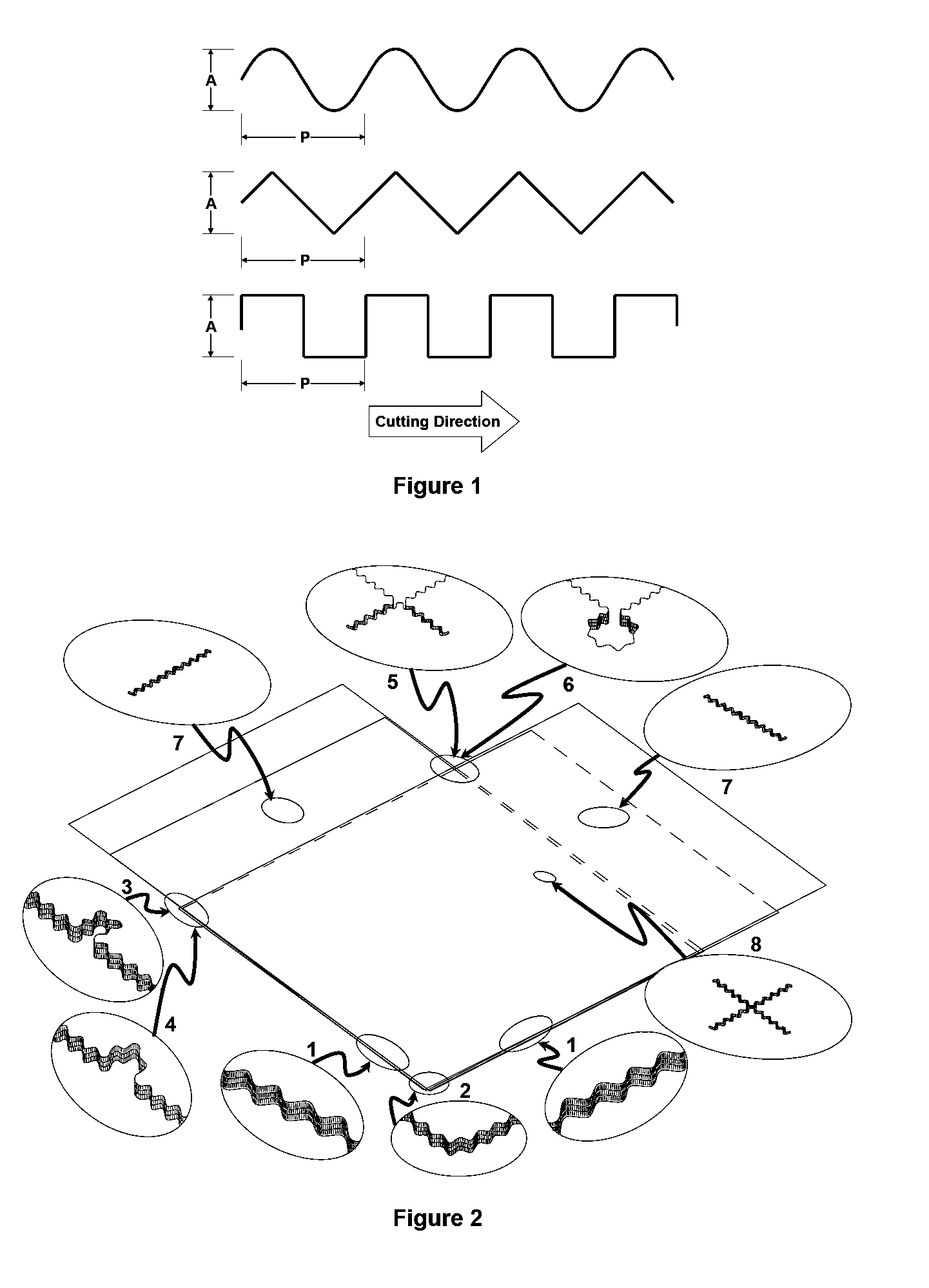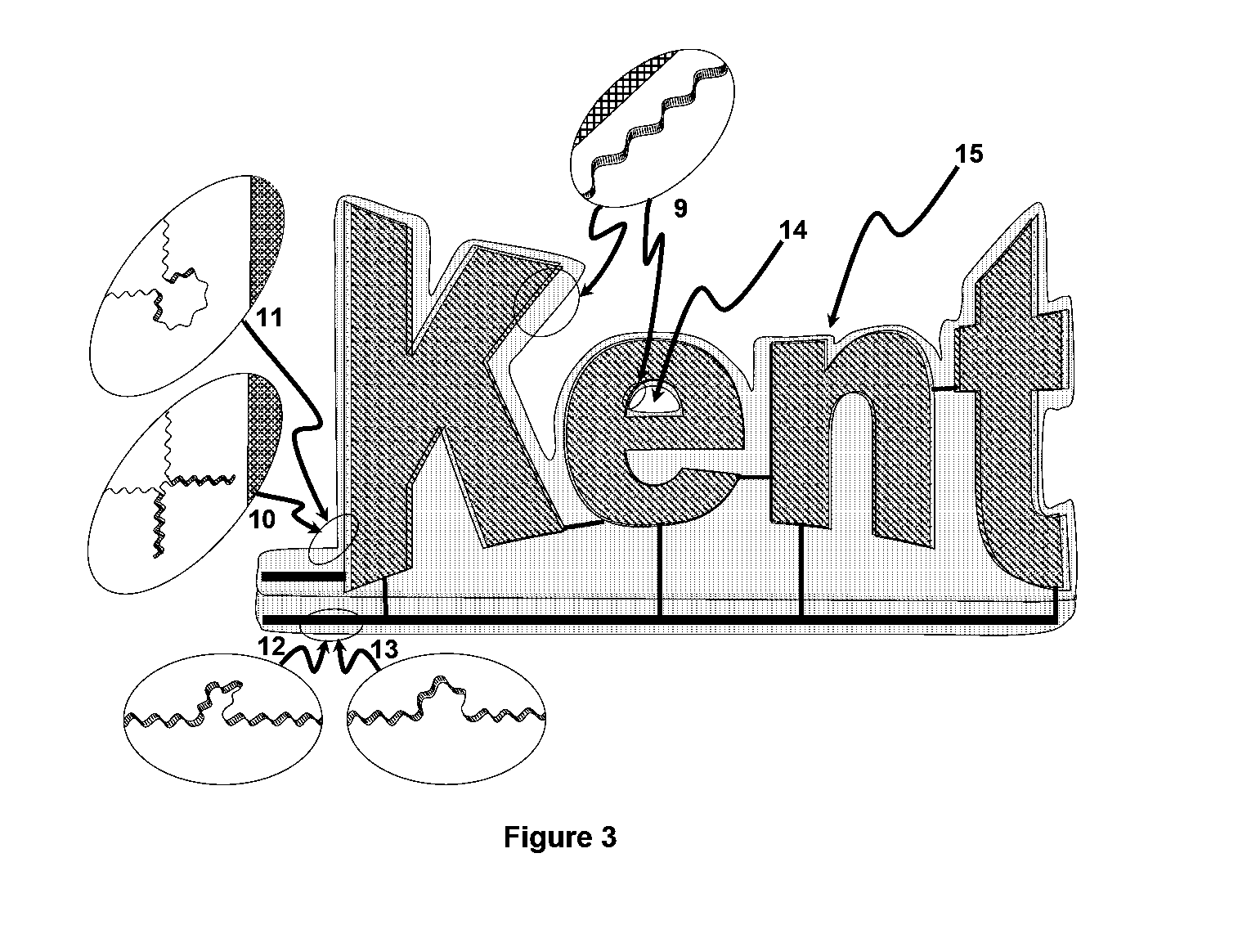Method of simultaneous singulation and edge sealing of plastic displays
a plastic display and singulation technology, applied in paper/cardboard containers, transportation and packaging, manufacturing tools, etc., can solve the problems of inflexibility and durability, difficult roll-to-roll manufacturing of gasket seals, and inability to meet the needs of continuous production, so as to avoid the tendency of individual layers, and achieve the effect of unique electro-optical features
- Summary
- Abstract
- Description
- Claims
- Application Information
AI Technical Summary
Benefits of technology
Problems solved by technology
Method used
Image
Examples
example 1
Single Layer Pixelated Display with ITO Conductor
[0054]An encapsulated liquid crystal layer using droplet dispersions by PIPS method was fabricated between two ITO-patterned 2 mil thick PET sheets (pixilated by rows and columns; FIG. 2). Solutions of an acrylate-based pre-polymer were vortex-mixed and then added to the cholesteric liquid crystal. Once this was vortex-mixed, 4.5 μm plastic spherical spacers were added to the mixture to preserve substrate spacing before polymerization. The system was mixed again via ultrasonic agitation (to suspend the spacers) and then pipetted between two PET substrates with conductive electrodes. The bead of liquid was then rolled down between the PET sheets using a hand roller and any excess was cleaned off. The material was polymerized under an Electro-lite ELC 4001 UV source as known in the art. During the curing process, the pre-polymer mixture polymerized, causing the liquid crystal to phase separate into droplets. After curing, an LCD was cut...
example 2
Multilayer Pixelated Display with ITO Conductor
[0056]Three encapsulated liquid crystal layers using droplet dispersions by PIPS method were fabricated between four ITO-patterned 2 mil thick PET sheets (pixelated by rows and columns; FIG. 2). Solutions of an acrylate-based pre-polymer were vortex-mixed and then added to the liquid crystal. Once the mixtures were vortex-mixed, 4 μm plastic spherical spacers were added to each mixture. The system was mixed again via ultrasonic agitation and then pipetted between two PET substrates with conductive electrodes. The bead of liquid was then rolled down between the PET sheets using a hand roller and any excess was cleaned off. Then each layer was individually laminated and polymerized under an Electro-lite ELC 4001 UV source. During the curing process, the pre-polymer mixture polymerized, causing the liquid crystal to phase separate into droplets. After curing, a three color LCD display was cut from the sheet using a CO2 M-300 laser marking ...
example 3
Single Layer Segmented Display with ITO Conductor
[0058]An encapsulated LC layer using droplet dispersions by PIPS method was fabricated between two segmented (see FIG. 3) ITO-patterned 2 mil thick PET sheets. Solutions of an acrylate-based pre-polymer were vortex-mixed and then added to the liquid crystal. Once this was vortex-mixed, 4.5 μm plastic spherical spacers were added to the mixture. The system was mixed again via ultrasonic agitation (to suspend the spacers) and then pipetted between two PET substrates with conductive electrodes. The bead of liquid was then rolled down between the PET sheets using a hand roller and any excess was cleaned off. The material was polymerized under an Electro-lite ELC 4001 UV. During the curing process, the pre-polymer mixture polymerized, causing the liquid crystal to phase separate into droplets. After curing, an LCD was cut from the sheet using a CO2 M-300 laser marking system built by Universal Laser Systems, Inc. (Scottsdale, Ariz.) by tra...
PUM
| Property | Measurement | Unit |
|---|---|---|
| thick | aaaaa | aaaaa |
| peak wavelengths | aaaaa | aaaaa |
| peak wavelengths | aaaaa | aaaaa |
Abstract
Description
Claims
Application Information
 Login to View More
Login to View More - R&D
- Intellectual Property
- Life Sciences
- Materials
- Tech Scout
- Unparalleled Data Quality
- Higher Quality Content
- 60% Fewer Hallucinations
Browse by: Latest US Patents, China's latest patents, Technical Efficacy Thesaurus, Application Domain, Technology Topic, Popular Technical Reports.
© 2025 PatSnap. All rights reserved.Legal|Privacy policy|Modern Slavery Act Transparency Statement|Sitemap|About US| Contact US: help@patsnap.com



